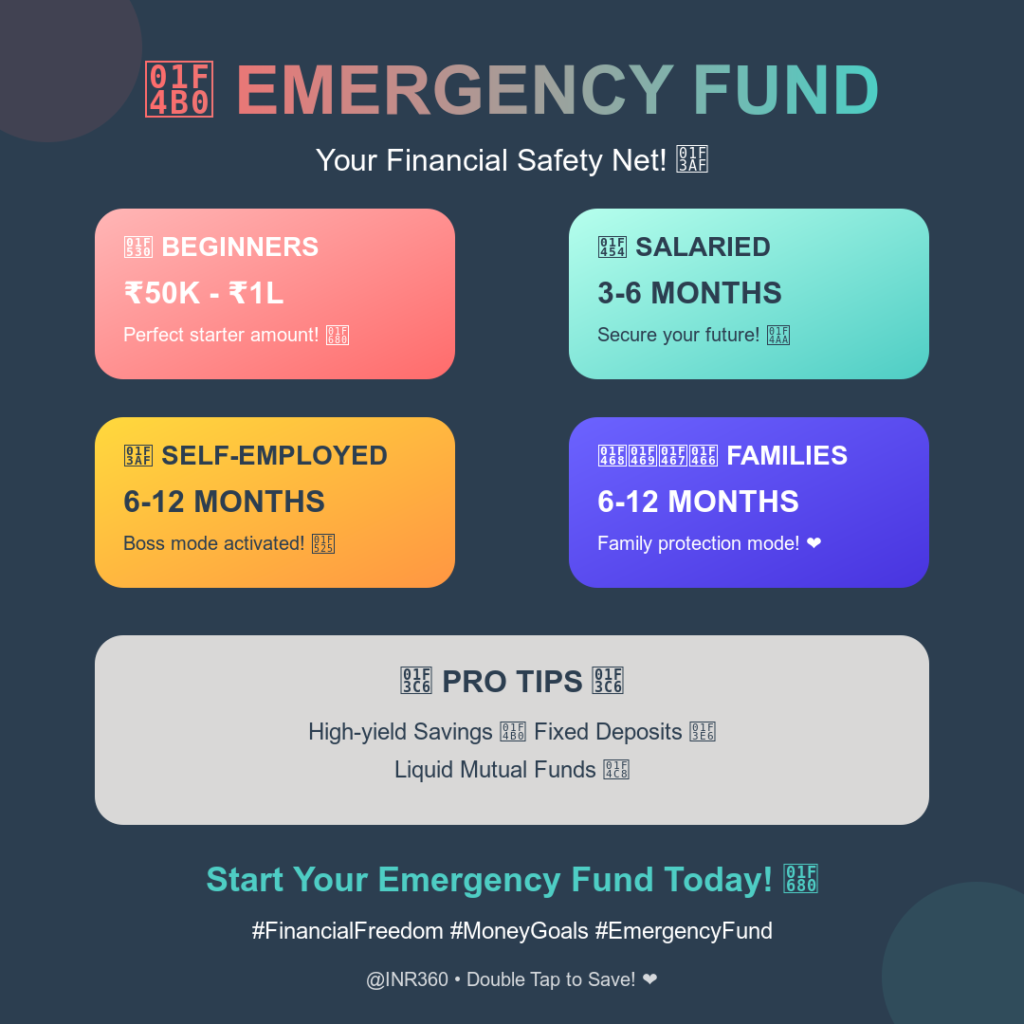Introduction: Understanding the Emergency Fund Importance
Unexpected expenses can arise at any time—medical emergencies, job loss, car repairs, or urgent home maintenance. Without a financial safety net, these situations can cause significant stress and lead to debt. This is why emergency fund importance cannot be overstated. A well-planned emergency fund ensures financial security during unforeseen circumstances, allowing you to handle crises without derailing your long-term financial goals.
Why an Emergency Fund is Essential
An emergency fund acts as a financial cushion for unexpected expenses. It helps you:
- Avoid high-interest debt from credit cards or loans
- Maintain financial stability during periods of income loss
- Reduce stress by having a backup plan
- Handle medical, vehicle, or home repairs without financial strain
How Much Should You Save in Your Emergency Fund?
The ideal size of your emergency fund depends on several factors, including your monthly expenses, job stability, and personal circumstances. A general rule of thumb is:
- Beginners: Start with ₹50,000 – ₹1,00,000 to cover small emergencies
- Salaried Employees: Save 3 to 6 months’ worth of living expenses
- Self-Employed/Freelancers: Aim for 6 to 12 months’ worth of expenses due to income fluctuations
- Families with Dependents: Save at least 6 to 12 months’ worth for added security
Practical Example of Emergency Fund Calculation
Scenario: Amit, a salaried professional, has monthly expenses of ₹50,000. He should aim for:
- ₹1,50,000 to ₹3,00,000 for a 3-6 month cushion
- ₹6,00,000 for long-term security This ensures he can manage emergencies without disrupting his financial stability.
Step-by-Step Guide to Building an Emergency Fund
1. Calculate Your Essential Monthly Expenses
Include only necessary costs:
- Rent/Mortgage
- Utilities (electricity, water, internet)
- Groceries and daily essentials
- Loan EMIs and insurance premiums
- Transportation costs
2. Set a Realistic Savings Goal
Decide how much you need and create a timeline to achieve it. For example:
- Save ₹10,000 per month to reach ₹1,20,000 in a year
- Allocate 20% of bonuses/tax refunds to your emergency fund
3. Choose the Right Savings Vehicle
The best places to keep your emergency fund include:
- High-yield savings accounts: Easy access and better interest than regular accounts
- Fixed Deposits (FDs): Slightly higher returns with some liquidity constraints
- Liquid Mutual Funds: Better growth potential with easy withdrawals
- Recurring Deposits (RDs): Ideal for disciplined savings over time
4. Automate Your Savings
Set up an automatic transfer every month to ensure consistent savings. Example:
- ₹5,000 transferred to a separate emergency fund account every month
- 5% of salary directly allocated to savings
5. Avoid Using the Fund for Non-Emergencies
Use your emergency fund only for unexpected situations like job loss, medical emergencies, or urgent repairs. Do not dip into it for vacations or shopping.
Best Tools to Track and Build Your Emergency Fund
1. YNAB (You Need a Budget)
- Helps set specific savings goals
- Tracks progress and spending patterns
2. Mint
- Auto-categorizes transactions
- Provides real-time insights into savings
3. PocketGuard
- Prevents overspending
- Suggests smart savings strategies
4. Google Sheets/Excel
- Customizable budgeting template
- Helps monitor savings manually
Common Mistakes to Avoid When Building an Emergency Fund
Mistake #1: Not Prioritizing Savings
Solution: Treat emergency savings like a bill—contribute every month.
Mistake #2: Keeping All Money in a Low-Interest Account
Solution: Use a mix of savings accounts, FDs, and liquid mutual funds for growth.
Mistake #3: Using the Fund for Non-Emergencies
Solution: Keep separate accounts for discretionary expenses.
Mistake #4: Saving Too Much in Cash
Solution: Maintain only 10-20% in cash for immediate access, and keep the rest in higher-yield options.
Advanced Strategies for Strengthening Your Emergency Fund
1. Side Income Contributions
Allocate freelance earnings, side gigs, or passive income to your emergency fund.
2. Windfall Savings
Use tax refunds, bonuses, or unexpected earnings to boost savings.
3. Expense Reduction Hacks
Cut non-essential spending and redirect savings to your fund.
4. Tiered Emergency Fund Strategy
- Short-Term (Immediate Needs): Cash and savings accounts
- Mid-Term (3-6 months buffer): Fixed deposits and liquid funds
- Long-Term (6+ months buffer): Conservative mutual funds
Real-Life Case Study: How Raj Built a ₹5 Lakh Emergency Fund in 2 Years
Raj, a marketing executive, struggled with unexpected expenses. He followed these steps:
- Tracked Expenses: Identified wasteful spending on subscriptions and dining out.
- Set a ₹20,000 Monthly Savings Goal: Used a mix of RDs and savings accounts.
- Automated Transfers: Ensured consistency in savings.
- Used Bonuses Wisely: Allocated 50% of annual bonuses to his emergency fund.
After two years, Raj successfully built a ₹5 lakh emergency fund, giving him financial peace of mind.
FAQs on Emergency Fund Importance
1. How much should I save in my emergency fund?
Ideally, 3-6 months of expenses for salaried employees and 6-12 months for freelancers or business owners.
2. Where should I keep my emergency fund?
A combination of high-yield savings accounts, fixed deposits, and liquid mutual funds ensures liquidity and growth.
3. Can I invest my emergency fund in stocks?
No, emergency funds should be low-risk and easily accessible. Avoid stocks or volatile assets.
4. What if I can’t save a large amount immediately?
Start small—₹5,000 per month adds up to ₹60,000 in a year. The key is consistency.
5. Should I use my emergency fund to pay off debt?
Only if the debt interest rate is above 10%; otherwise, maintain a balance between saving and debt repayment.
Conclusion: Secure Your Financial Future with an Emergency Fund
Having an emergency fund is a non-negotiable financial safety net. Whether you’re a salaried employee, freelancer, or entrepreneur, building a robust emergency fund should be a top priority. By following the right strategies, using smart tools, and avoiding common mistakes, you can ensure financial stability in any crisis.
🚀 Start today—your future self will thank you!
You Might Also Like to Read: How to Create an Effective Budget That Works: Step-by-Step Guide
Visual Recap: Emergency Fund 101




